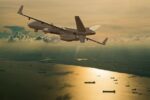Türkiye is set to receive the first serial-production unit of its domestically developed Altay main battle tank (MBT) in October 2025. This delivery milestone aligns with the official opening of a new BMC defense manufacturing facility in Arifiye, Sakarya Province—marking a significant step forward for Türkiye’s indigenous armored vehicle capabilities and defense industrial base.
Altay Program Timeline and Development Challenges
The Altay MBT program originated in the mid-2000s as part of Türkiye’s long-term goal of reducing reliance on foreign armored vehicle imports. Initially awarded to Otokar in 2008 under a $500 million prototype development contract, the project transitioned to serial production under BMC in 2018. However, progress has been repeatedly delayed due to engine supply issues and integration challenges.
Originally slated for delivery by the early 2020s, the program was stalled by Germany’s refusal to export MTU engines and RENK transmissions due to political tensions. This forced Türkiye to seek alternative powerpack solutions from South Korea. In April 2023, two pre-production “Yeni Altay” (New Altay) tanks were delivered for testing—equipped with Hyundai Doosan DV27K engines and S&T Dynamics EST15K transmissions derived from South Korea’s K2 Black Panther platform.
New Production Facility: Strategic Industrial Expansion
The newly inaugurated BMC Defense plant in Sakarya is designed specifically for large-scale production of tracked armored vehicles including the Altay MBT. The facility reportedly spans over 100 hectares and includes test tracks, integration lines, quality assurance labs, and logistics infrastructure.
This plant is expected to have an annual capacity of up to 100 tanks once fully operational. It will also support MRO (maintenance, repair & overhaul) services for existing Turkish Army platforms such as Leopard 2A4s and M60Ts. The site underscores Ankara’s ambition not only to produce tanks domestically but also become a regional exporter of next-generation land systems.
Altay MBT Configuration: Features and Subsystems
The serial-production variant of the Altay incorporates several upgrades over earlier prototypes:
- Armament: A Rheinmetall-licensed MKEK-produced 120 mm L/55 smoothbore gun with an autoloader system under development.
- Armor: Modular composite armor developed by Roketsan; ERA modules optional based on mission profile.
- Fire Control & Sights: ASELSAN’s Volkan-II fire control system; panoramic commander sight; thermal imaging; laser rangefinder.
- C4ISR Integration: Indigenous battlefield management system compatible with Turkish Armed Forces’ digital command networks.
- Active Protection System (APS): The AKKOR APS developed by ASELSAN is scheduled for integration post-2026 after further trials.
- Mobility: Powered by Hyundai Doosan DV27K V12 diesel engine (1,500 hp); torsion bar suspension; hydropneumatic upgrades under evaluation.
The tank weighs approximately 65 tons and has an operational range exceeding 450 km with a top road speed near 70 km/h. Crew configuration remains conventional at four personnel—commander, gunner, loader (manual), and driver—though future variants may explore semi-autonomous loading systems.
Tactical Role and Operational Integration Plans
The Turkish Armed Forces plan to induct at least 250 Altays under Phase-I procurement. Initial units will be deployed alongside upgraded Leopard 2A4s within mechanized corps formations along Türkiye’s eastern borders and Aegean region. Doctrine integration focuses on combined arms maneuver warfare supported by UAV reconnaissance assets like Bayraktar TB2s for real-time targeting data relay via secure C4I networks.
The Altays are expected to replace aging M60 Pattons still in service while complementing modernized M60Ts upgraded under Israeli-Turkish cooperation programs from the early 2000s. The tank’s networked architecture allows seamless communication with artillery fire direction centers and drone ISR feeds via TAFICS (Turkish Armed Forces Integrated Communication System).
Export Prospects and Strategic Implications
BMC has actively marketed the Altay MBT internationally—particularly in Gulf states such as Qatar (which co-financed part of development), Saudi Arabia, Oman—as well as Malaysia and Indonesia where joint production or technology transfer deals are being explored. However, export success hinges on full localization of critical subsystems such as powerpacks and fire control electronics—which remains partially dependent on South Korean suppliers at present.
Ankara sees the Altay not only as a military asset but also a geopolitical tool—enhancing defense ties with potential buyers while reducing dependency on NATO suppliers amid increasing friction with Western partners. Furthermore, domestic production aligns with Türkiye’s broader “National Technology Move” aimed at achieving defense self-sufficiency across air-land-sea domains by mid-2030s.
Outlook: From Prototype Delays to Serial Production Reality
If current timelines hold firm—with first deliveries starting October 2025—the Altay program could finally transition from prolonged R&D into operational deployment after nearly two decades of development effort. Success will depend on sustained funding flows from SSB (Presidency of Defence Industries), continued collaboration with Korean OEMs until local alternatives mature (e.g., BATU engine project), and rigorous troop-level field trials across diverse terrain conditions including southeastern Anatolia’s mountainous zones.
The opening of BMC’s dedicated tank factory signals institutional commitment toward sustaining long-term heavy armor capability—a domain increasingly challenged by evolving anti-tank threats like loitering munitions and top-attack ATGMs seen in recent conflicts such as Ukraine or Nagorno-Karabakh. Whether the Altay can adapt through modular survivability upgrades remains key to its battlefield relevance beyond initial deployment cycles.










